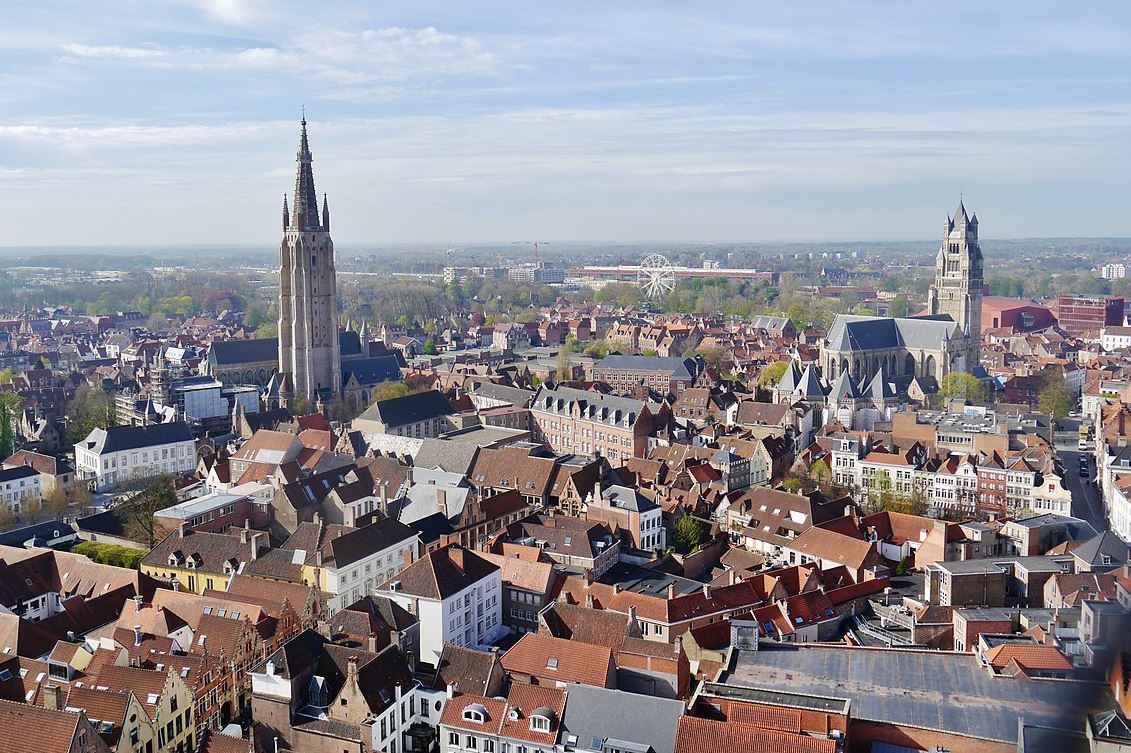If you want to discover the most famous buildings in Bruges, then there’s no better way than to climb this impressive tower in the city center.
The Belfry embodies the grandeur and wealth of a city that was once the most important port city in Europe.
This impressive feat of Gothic architecture remains one of the ultimate symbols of this picturesque medieval city in the western part of Belgium.
In this article, you’ll discover some of the most interesting facts about the Belfry of Bruges so you can discover its history and architecture.
1. It faces the main market square in the heart of Bruges
The Belfry of Bruges is one of the most imposing buildings in Bruges, a medieval city that prospered during the Middle Ages.
Bruges became the capital of the County of Flanders in 1089 and its marked the start of the city’s Golden Age. It quickly became the center of the wool and cloth industry and a major port city in Europe.
This wealth allowed the city government to start major construction projects, including this remarkable bell tower in the heart of the city.
The Belfry faces the south side of the “Markt,” the main market in the city. The Provincial Court, a remarkable Gothic Revival building, is located right next to it.
The other famous square in central Bruges, The Burg, is located just east of the Belfry. Here you can find the Basilica of the Holy Blood and Bruges City Hall.
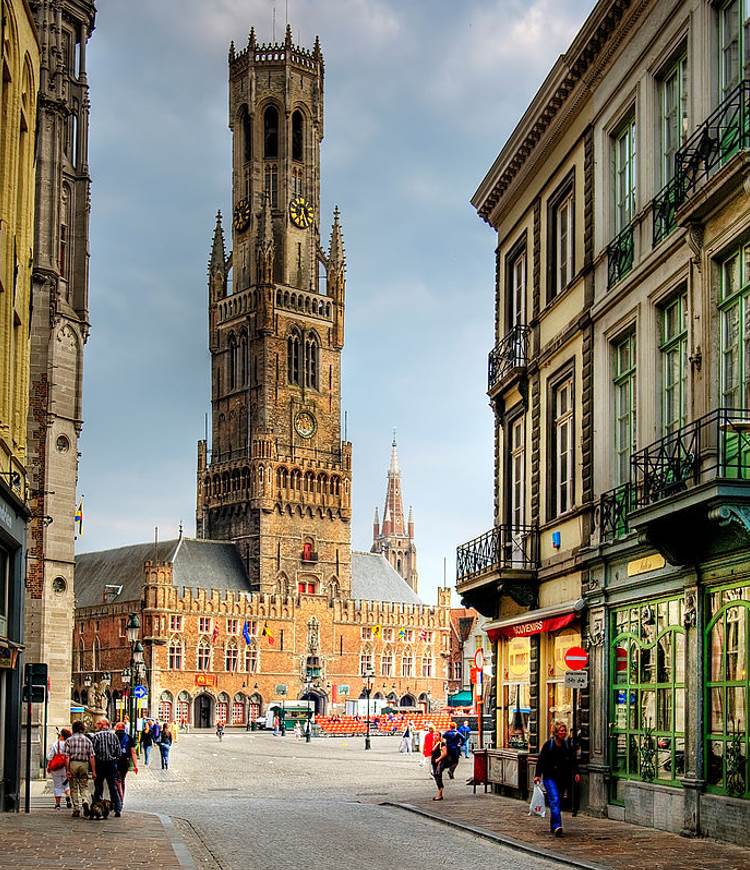
2. The first stone of the belfry was laid in the year 1240
The first stone of this monumental building was laid in 1240 but this original building didn’t survive. It was destroyed by fire in 1280 and quickly rebuilt in the late 13th century.
This wasn’t the only time that the Bruges Belfry faced a calamity, but none of the others were as severe as this one.
American poet Henry Wadsworth Longfellow once referred to these events as follows:
In the market-place of Bruges stands the belfry old and brown;
Thrice consumed and thrice rebuilded, still it watches o’er the town.

3. The belfry had a practical function for multiple centuries
Gothic architecture focused on building structures as high as possible, giving them the appearance of reaching the heavens above.
While this certainly looked impressive, it also had a practical function because the Belfry was used as a watchtower. From high above, people could spot fires or approaching intruders.
The other major purpose of this building was to house the treasury and the municipal administration. The Belfry served this purpose for multiple centuries.
When you visit the Belfry today, you will come across the medieval city charters, coffers, and seals inside this treasury.
Another remarkable fact about the Belfry is that a huge market hall was constructed against it. Because of this, the tower is also known as the “Halletoren” or the “Tower of the Halls.”
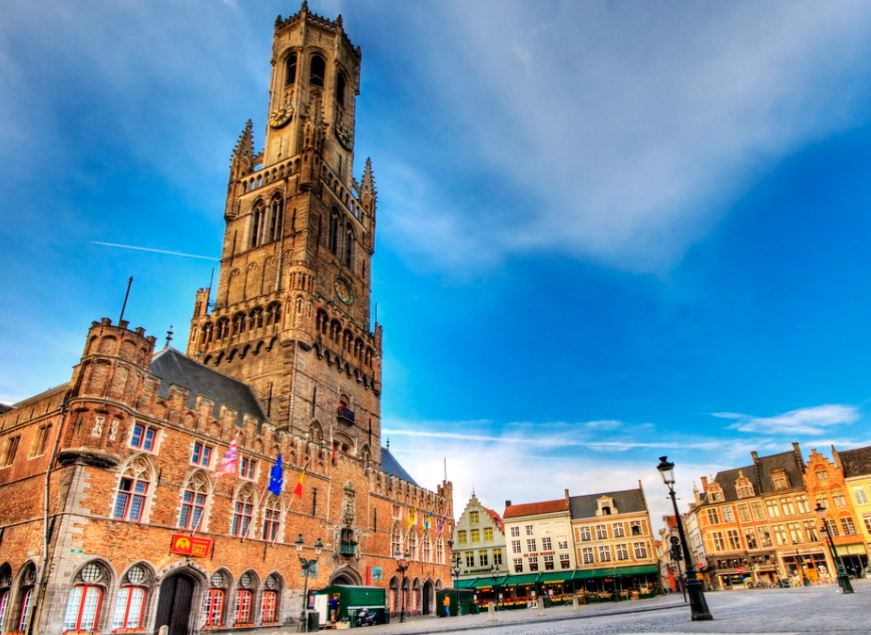
4. The octagonal structure at the top dates back to the late 15th century
When you take a closer look at the top section of the Belfry of Bruges, you notice that something isn’t right.
That’s because the octagonal structure on top of the building was constructed 2 centuries after the original Belfry was completed.
This part was completed between 1483 and 1487 and significantly increased the height of the building.
Remarkably, the city’s wealth started to decline after 1500, a period in history when the so-called “Zwin Channel” started silting up. This disconnected the city from the North Sea.
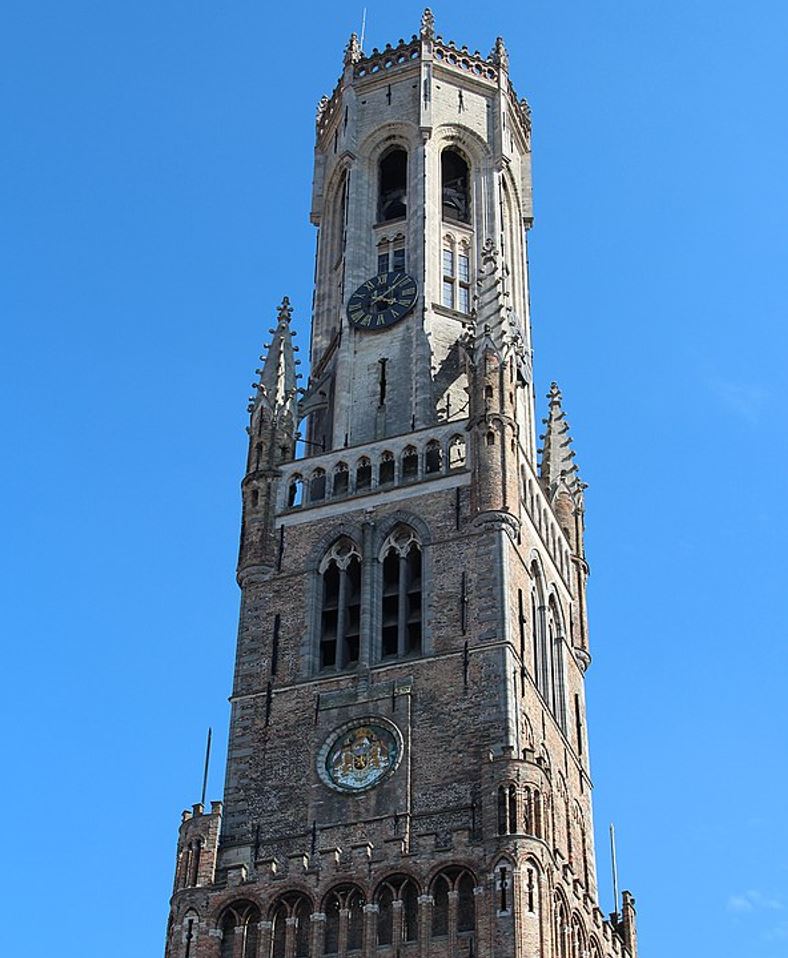
5. How tall is this famous building in Bruges?
The Belfry majestically overlooks the medieval heart of the relatively small city of Bruges. It towers above every other building in its vicinity as it reaches a height of 83 meters (272 feet).
It’s not the tallest building in Bruges, though. This honor is reserved for the Church of Our Lady which stands 115.6 meters (379 feet).
This Gothic church houses one of Michelangelo’s masterpieces called the “Madonna of Bruges,” a sculpture that depicts the Virgin Mary and her infant Jesus Christ.
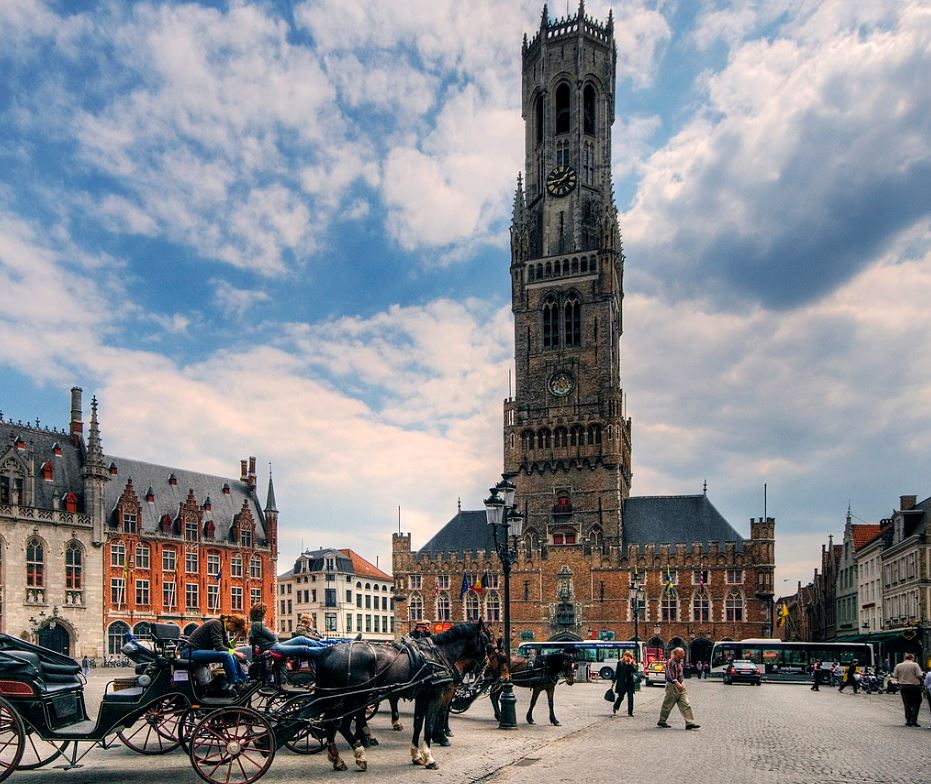
6. The tower was once topped by a wooden spire
The fact that the Belfry isn’t the tallest building in Bruges is remarkable. Equally fascinating is that it’s not as tall as it once was until the early 1740s.
The octagonal structure on tip of the Belfry was topped with a wooden spire that featured a sculpture of Saint Michael.
This didn’t last long because it was completely destroyed by fire after it was hit by a lightning strike in 1493. It was quickly replaced but the second spire suffered the same fate in 1741.
The only change that was made to the building after that was the addition of the Gothic Revival parapet to the roof in 1822.

7. It could be referred to as the “Leaning Belfry of Bruges”
You surely know the Leaning Tower of Pisa, right?
This tilted tower in the Italian city of Pisa was saved from destruction in recent decades after it almost reached the point of no return.
The Belfry of Bruges was constructed on a sandy foundation and when the octagonal structure was added on top of it, it started tilting.
You don’t have to worry if you plan to climb the tower, though, because it only leans 87 centimeters (34.25 inches) to the east which is far from dangerous.
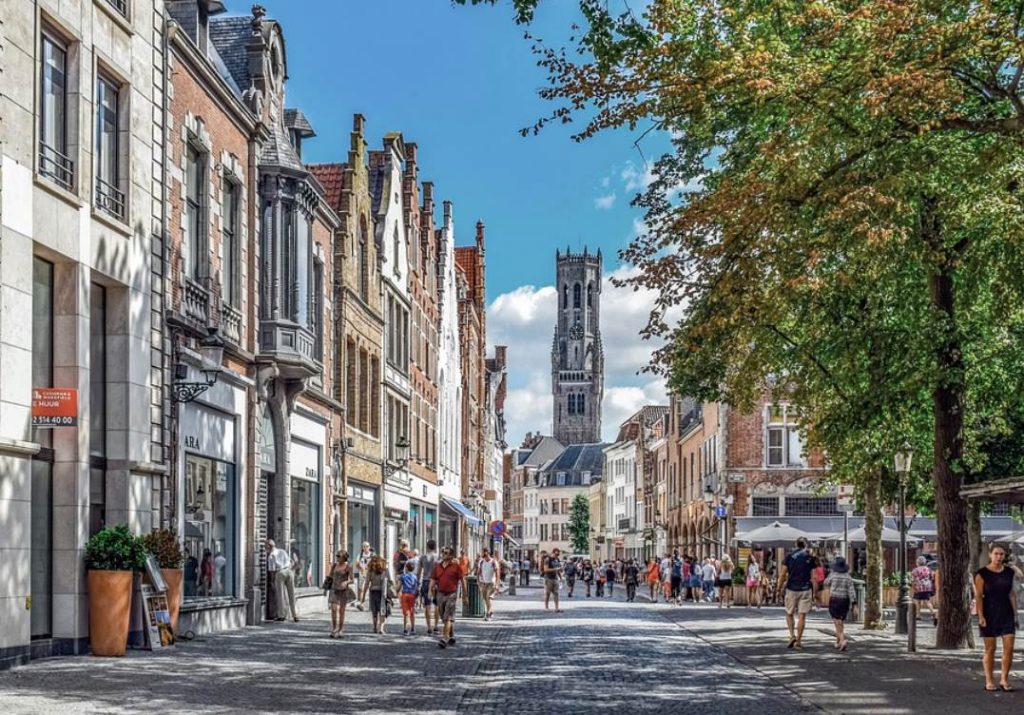
8. You can reach the top of this UNESCO site by claiming 366 steps
So you’re brave enough to climb the 366 steps up a narrow and steep staircase? You won’t be disappointed because the view of the city and surroundings is breathtaking.
When you finally reach the top of the tower, you can see the 47 bells and the carillon that is used to operate them.
What’s remarkable is that the Belfry of Bruges is part of two UNESCO World Heritage sites.
It has been part of the extensive Belfries of Belgium and France sites since 1999. It is also an integral part of the historic center of Bruges UNESCO site since 2000.
